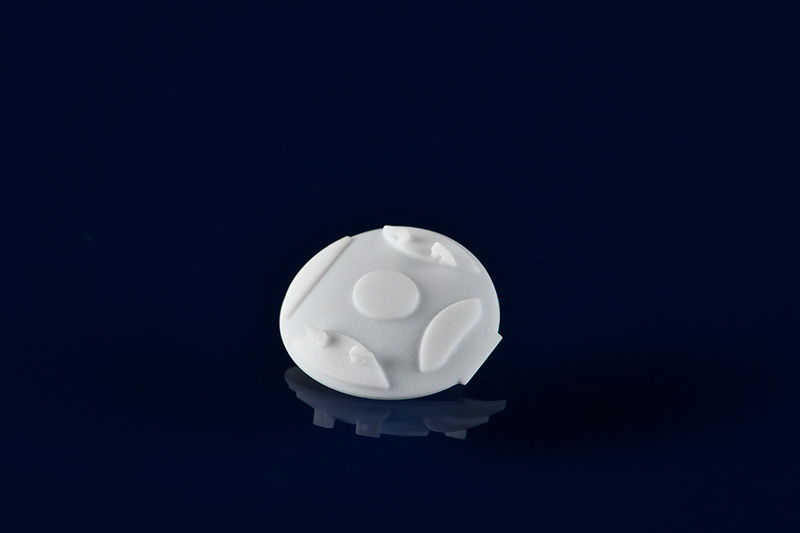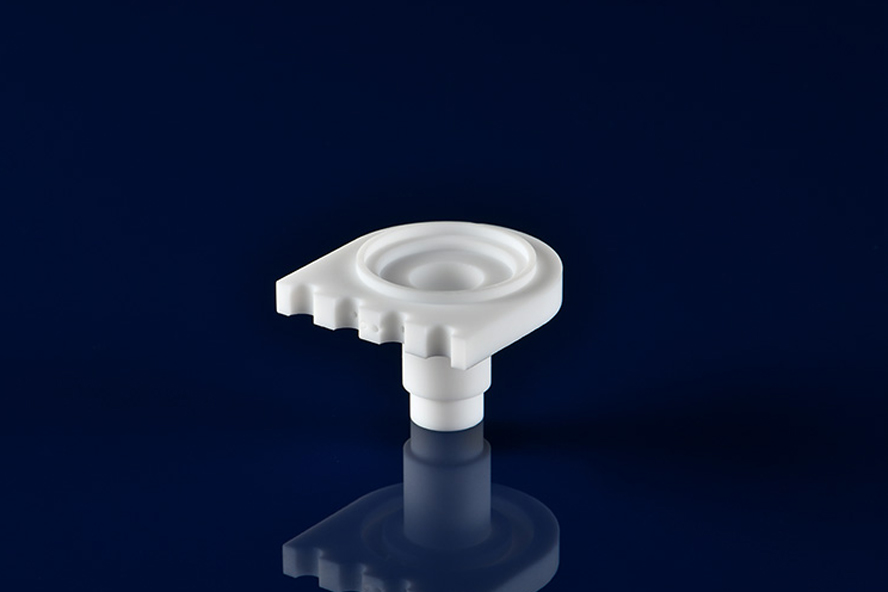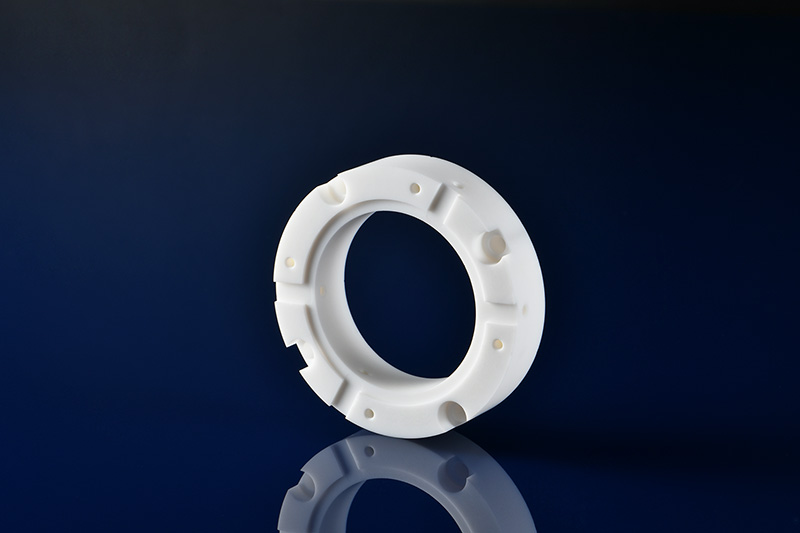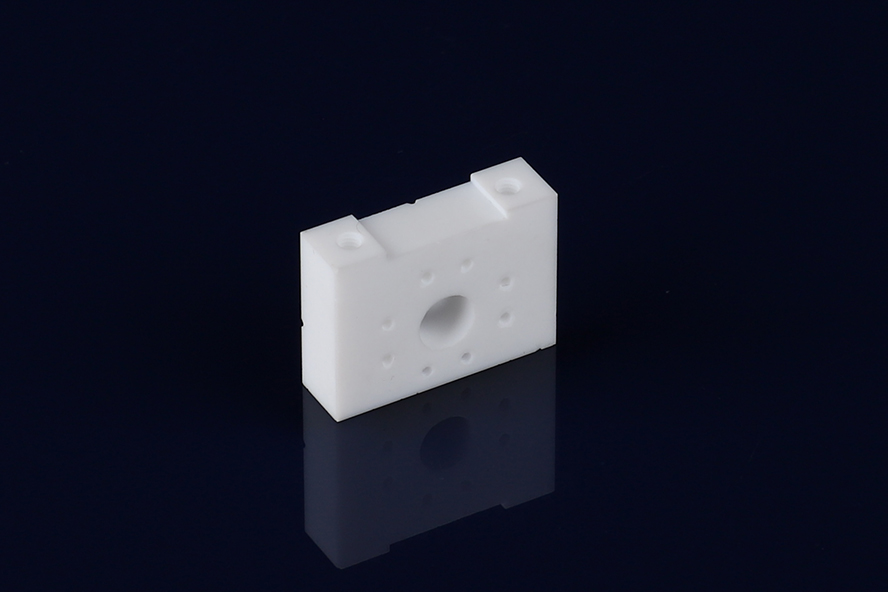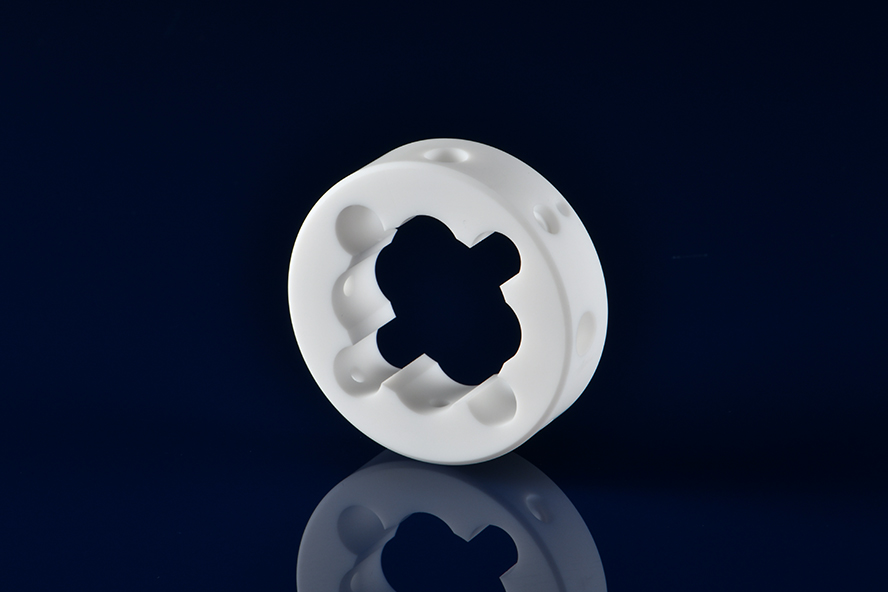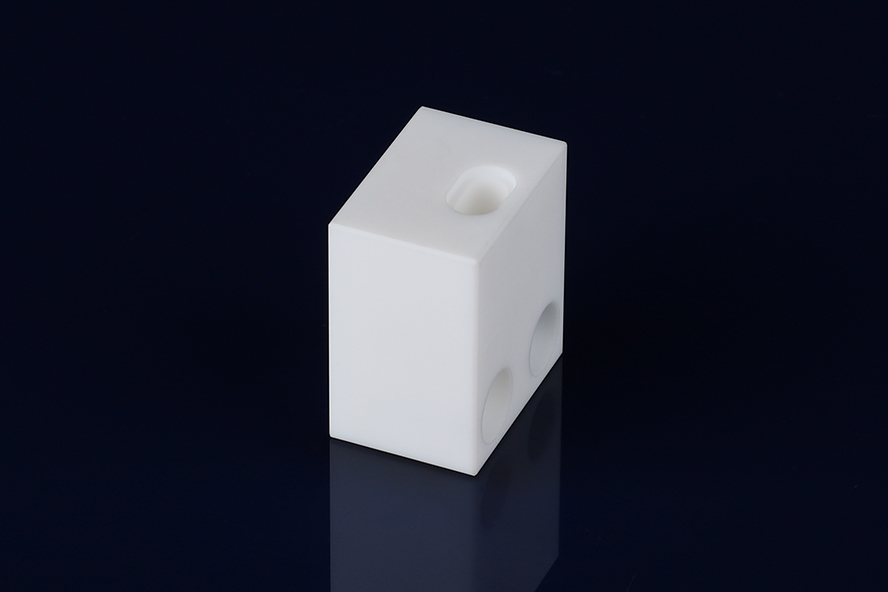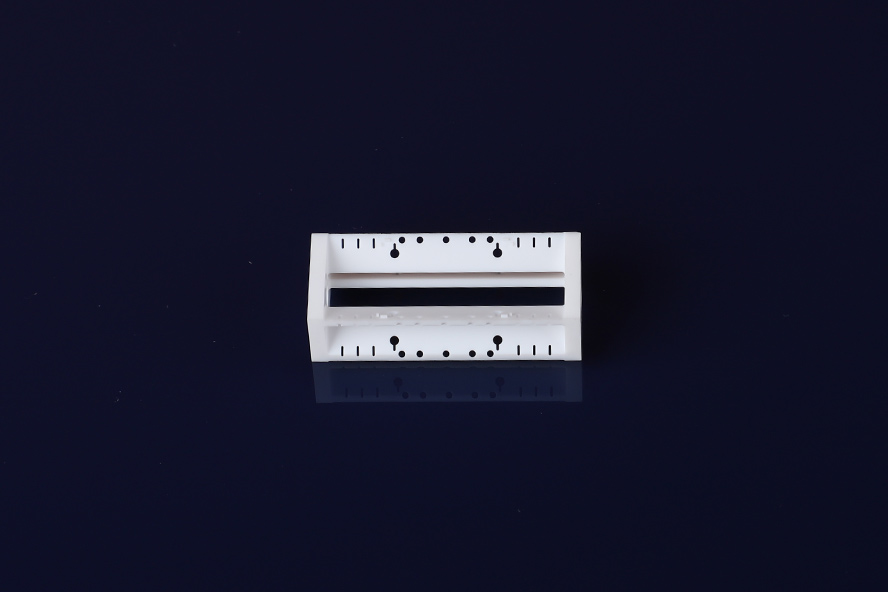Macor – Machinable Ceramic
Macor machinable ceramics are white, odorless, and non wetting ceramics produced by Corning Inc. Macor has zero porosity, zero gas release rate, low thermal expansion coefficient, and the ability to process like metals. In application scenarios that require high performing and vacuum environments, Macor is usually machined into high-precision, complex irregular components to ensure the reliability and stability of the project. Through polishing, the surface roughness of these components can reach a low value of Ra 0.013 μ m. In addition, Macor's advantage is that it can be machined using standard metalworking tools without sintering or high-temperature treatment. Compared with other technical ceramics, its machining flexibility undoubtedly makes it stand out in applications with complex shapes and high precision requirements.
Macor Advantages
Macor has a pore free microstructure, making it impermeable to gases and liquids. Performed well in Ultra High Vacuum
Excellent machinability, which can be processed using standard metal processing tools such as lathes, milling machines, drills, and saws.
No sintering or further heat treatment is required, reducing manufacturing costs.
Can be combined with other materials such as metal and glass
Not easy to creep or deform at high temperatures, with good dimensional stability
Electric insulator material, it is an ideal material for electronic components and high-voltage applications
Low thermal expansion coefficient, The coefficient of thermal expansion matches many metals and sealing glasses
Has strong resistance to various chemical substances, including acids, bases, solvents, and gases
Capable of continuous operation at temperatures up to 800 ° C, with a peak operating temperature of 1000 ° C under no-load conditions
In high-precision and complex applications, Macor can achieve a machining tolerance of 0.0005 inches (0.013 millimeters)
What can Macor ceramics be used for
Ultra high vacuum system, vacuum feedthrough, and insulator
Fixtures, insulators, and precision components in semiconductor equipment
Mass spectrometer, ion trap, and low-temperature system
Surgical instruments, diagnostic equipment, and imaging system components
Electric insulators in ion thrusters
Electrode holder for plasma generator
Structural support for high-voltage equipment and transformers
High voltage components in X-ray tubes
Optical components in spectrometers and laser systems
High temperature insulation brackets and components in spacecraft and satellites
Products
Macor Material Characteristics
Thermal | SI/Metric | Imperial |
CTE -100°C - 25°C | 81 x 10-7/°C | 45 x 10-7/°F |
CTE 25°C - 300°C | 90 x 10-7/°C | 50 x 10-7/°F |
CTE 25°C - 600°C | 112 x 10-7/°C | 62 x 10-7/°F |
CTE 25°C - 800°C | 123 x 10-7/°C | 68 x 10-7/°F |
Specific Heat, 25°C | 0,79 kJ/kg°C | 0.19 Btu/lb°F |
Thermal Conductivity, 25°C | 1,46 W/m°C | 10.16 Btu.in/hr.ft²°F |
Thermal Diffusivity, 25°C | 7,3 x 10-7m²/s | 0.028 ft²/hr |
Continuous Operating Temperature | 800°C | 1472°F |
Maximum No Load Temperature | 1000°C | 1832°F |
Mechanical | ||
SI/Metric | Imperial | |
Density | 2,52 g/cm3 | 157 lbs/ft3 |
Porosity | 0% | 0% |
Young’s Modulus, 25°C(Modulus of Elasticity) | 66,9 GPa | 9.7 x 106 PSI |
Poisson’s Ratio | 0,29 | 0.29 |
Shear Modulus, 25°C | 25,5 GPa | 3.7 x 106 PSI |
Knoop Hardness, 100g | 250 kg/mm2 | |
Modulus of Rupture, 25°C(Flexural Strength) | 94 MPa (Minimum specified average value) | 13 600 PSI |
Compressive Strength(After polishing) | 345 MPa(up to 900 MPa) | 49 900 PSI(130 000 PSI) |
Electrical | ||
SI/Metric | Imperial | |
Dielectric Constant, 25°C | ||
1 kHz | 6,01 | 6,01 |
8,5 GHz | 5,64 | 5,64 |
Loss Tangent, 25°C | ||
1 kHz | 0,0040 | 0,0040 |
8,5 GHz | 0,0025 | 0,0025 |
Dielectric Strength (AC) avg. (25°C, under 0,3 mm thickness.) | 45 kV/mm | 1143 V/mil |
Dielectric Strength (DC) avg.(25°C, under 0,3 mm thickness) | 129 kV/mm | 3277 V/mil |
DC Volume Resistivity, 25°C | 1017 Ohm.cm | 1017 Ohm.cm |
Disclaimer: The values presented herein represent the mean and typical outcomes derived from test samples. They are intended solely as indicative guidance for the design of ceramic components and are not guaranteed in any manner. Actual values may vary based on the shape and size of the intended component.
Machining Macor
Machining Macor (glass ceramics) requires special techniques to obtain precise dimensions and smooth surfaces. Careful attention should be paid to tool selection, cutting parameters, and cooling methods. Tool selection: Use standard hard alloy tools to ensure cutting accuracy. Machine settings: Ensure strict machine settings to minimize vibrations that may cause debris and cracks. Cooling: Use coolant to dissipate heat and reduce thermal stress. Processing Macor ceramics, especially complex structural components, requires a comprehensive understanding of material properties and professional processing techniques. By carefully selecting tools, optimizing processing parameters, and adopting advanced technology, high-precision and high-quality components are achieved to meet the strict requirements of various high-performance applications.
Jundro Ceramics is a professional precision manufacturer of Macor Machinable Ceramic materials. We specialize in utilizing our technical expertise and advanced equipment to process high-precision products. Our comprehensive service scope includes material selection, precision machining, surface treatment, and quality testing to ensure that each product can perform at its best in practical applications. If you would like to purchase Macor boards, rods, bars, tubes, or custom machined parts, please contact us



